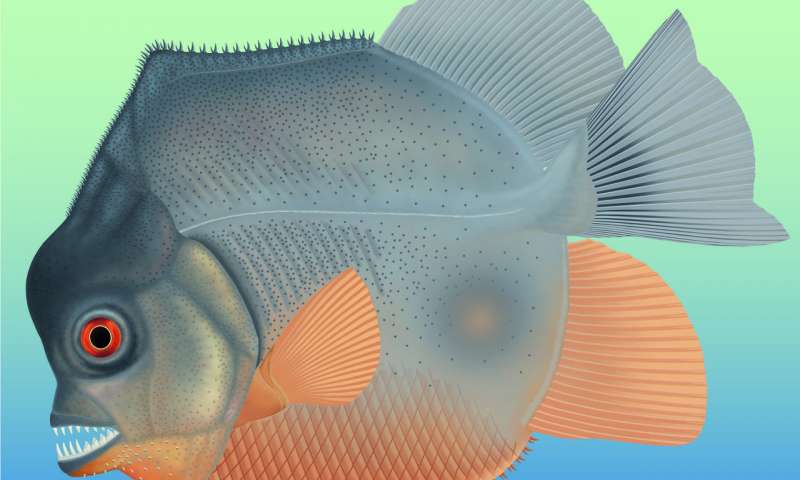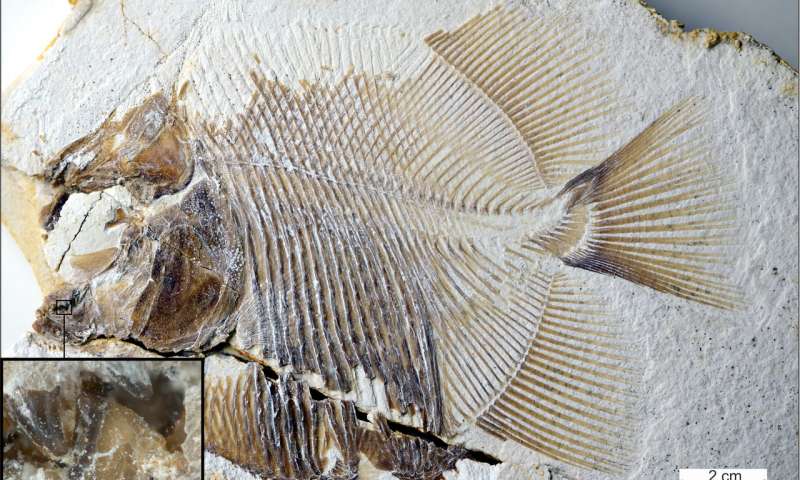As if the Jurassic land wasn’t dangerous enough, the seas were riddled with blood-thirsty creatures.

Ichthyosaurs and plesiosaurs are probably the Jurassic’s best-known marine predators. Growing up to impressive sizes and being perfectly adapted for killing, they were able to hunt everything and anything that ventured in their territory, though they presumably stuck to large animals. But things were not getting much better for smaller creatures, which were preyed upon by a newly-discovered, piranha-like species. This fish species had teeth specialized for biting off chunks off other fish — and researchers know this because they’ve also found its victims.
“We have other fish from the same locality with chunks missing from their fins,” says David Bellwood of James Cook University, Australia. “This is an amazing parallel with modern piranhas, which feed predominantly not on flesh but the fins of other fishes. It’s a remarkably smart move as fins regrow, a neat renewable resource. Feed on a fish and it is dead; nibble its fins and you have food for the future.”

The fish, called Piranhamesodon pinnatomus, is well-preserved and comes from the same limestone layers that also yielded the famous Archaeopteryx — the famous transitional fossil between dinosaurs and modern birds. The fish fossils revealed long, pointed teeth on the outside, and triangular teeth with serrated cutting edges on the lower jaw.
Interestingly though, these ancient fish are not at all related to piranhas — so it was quite surprising to see them exhibit so many similarities to these modern, carnivorous fish.
“We were stunned that this fish had piranha-like teeth,” says Martina Kölbl-Ebert of Jura-Museum Eichstätt (JME-SNSB). “It comes from a group of fishes (the pycnodontids) that are famous for their crushing teeth. It is like finding a sheep with a snarl like a wolf. But what was even more remarkable is that it was from the Jurassic. Fish as we know them, bony fishes, just did not bite flesh of other fishes at that time. Sharks have been able to bite out chunks of flesh but throughout history, bony fishes have either fed on invertebrates or largely swallowed their prey whole. Biting chunks of flesh or fins was something that came much later.”
This is a remarkable example of convergent evolution, something which our colleague Elena Motivans described in detail in a previous article. Essentially, convergent evolution is when non-related organisms evolve extremely similar characteristics completely separately — the most classical example being bats and birds, which developed wings and flight without even being the same group.
Animals develop these characteristics because they live in similar environments or ecological niches, and similar environments impose similar adaptations. It’s impressive that piranhas and Piranhamesodon developed such similar traits, living tens of millions of years away from each other. Researchers call the new find a “staggering example of evolutionary versatility and opportunism.”
“The new finding represents the earliest record of a bony fish that bit bits off other fishes, and what’s more it was doing it in the sea,” Bellwood goes on.
“So when dinosaurs were walking the earth and small dinosaurs were trying to fly with the pterosaurs, fish were swimming around their feet tearing the fins or flesh off each other.”
Journal Reference: Kölbl-Ebert et al.: “A Piranha-like Pycnodontiform Fish from the Late Jurassic,” Current Biology (2018). DOI: 10.1016/j.cub.2018.09.013.


